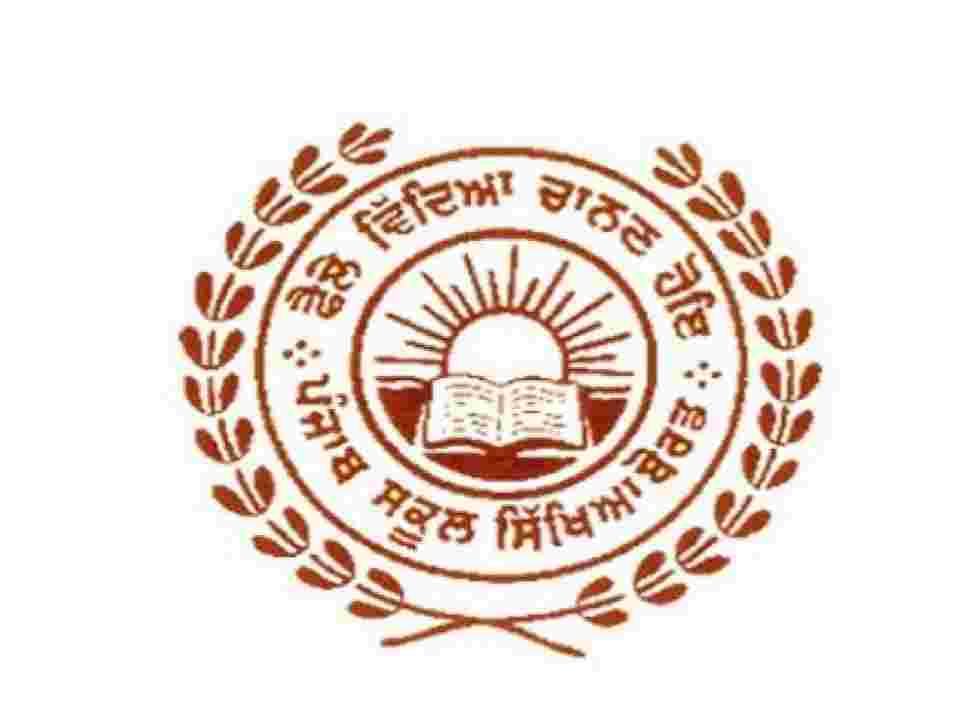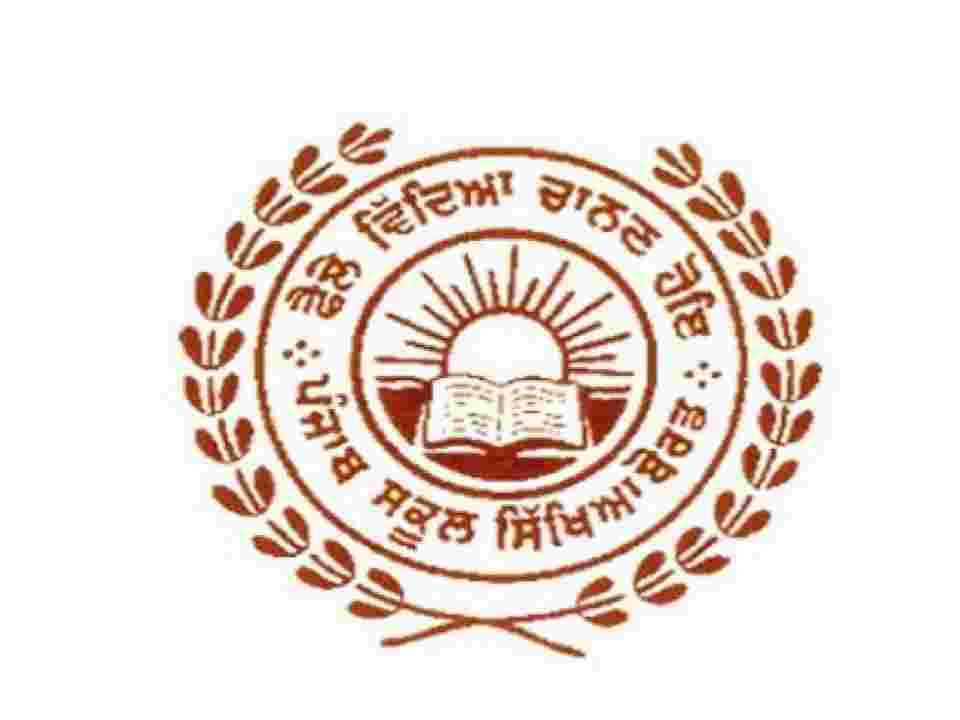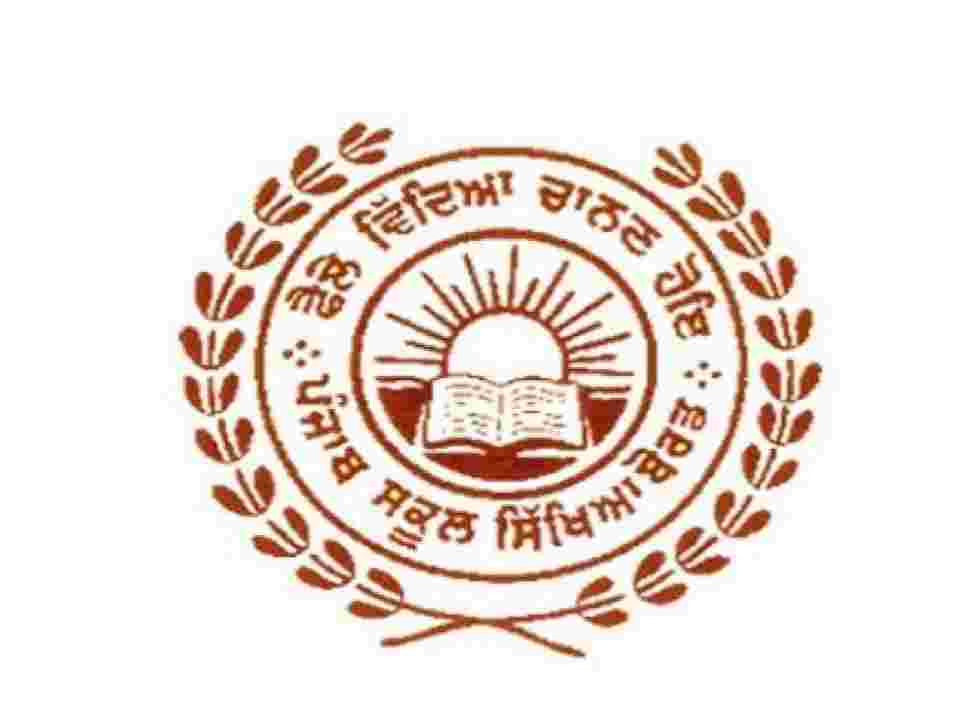
Free
Free
Notopedia is a nonprofit organization with a mission to provide free learning support to all. Click here to donate or volunteer.
Notopedia has a mission to provide free learning support. Click here to donate or volunteer.

OFFICIAL SYLLABUS 2022
Unit I: Reproduction
Chapter 1: Reproduction in Organisms
Reproduction, a characteristic feature of all organism for continuation of species; Modes of reproduction-Asexual and sexual reproduction; Modes –Binary fission, sporulation, budding, gemmule, fragmentation; vegetative propagation in plants.
Chapter 2: Sexual Reproduction in Flowering Plants
Flower structure; Development of male and female gametophytes; Pollinationtypes, agencies and examples; Outbreedings devices; Pollen-Pistil interaction; Double fertilization; Post fertilization events-Development of endosperm and embryo, Development of seed and formation of fruit; Special modes-apomixis, parthenocarpy, polyembryony; Significance of seed dispersal and fruit formation.
Chapter 3: Human Reproduction
Male and female reproductive systems; Microscopic anatomy of testis and ovary; Gametogenesis-spermatogenesis & oogenesis; Menstrual cycle; Fertilisation, embryo development upto blastocyst formation, implantation; Pregnancy and placenta formation (Elementary idea); Parturition (Elementary idea); Lactation (Elementary idea).
Chapter 4: Reproductive Health
Need for reproductive health and prevention of sexually transmitted diseases (STD); Birth control – Need and Methods, Contraception and Medical Termination of Pregnancy (MTP); Amniocentesis; Infertility and assisted reproductive technologies-IVF, ZIFT, GIFT (Elementary ides for general awareness).
Unit II: Genetics and Evolution
Chapter 5: Heredity and variation
Mendelian Inheritance; Deviations from Mendelism-Incomplete dominance, Codominance, Multiple alleles and Inheritance of blood groups, Pleiotropy; Elementary idea of polygenic inheritance; Chromosome theory of inheritance; Chromosomes and genes; Sex determination-In humans, birds, honey bee; Linkage and crossing over; Sex linked inheritance – Haemophilia, Colour blindness; Mendelian disorders in humans- Thalassemia; Chromosomal disorders in humans; Down’s syndrome, Turner’s and Klinefelter’s syndromes.
Chapter 6: Molecular Basis of Inheritance
Search for genetic material and DNA as genetic material; Structure of DNA and RNA; DNA packaging; DNA replication; Central dogma; Transcription, genetic code, translation; Gene expression and regulation- Lac Operon; Genome and human genome project; DNA finger printing.
Chapter 7: Evolution
Origin of life; Biological evolution and evidences for biological evolution (Paleontological, Comparative anatomy, embryology and molecular evidence); Darwin’s contribution, Modern Synthetic theory of Evolution; Mechanism of evolution-Variation (Mutation and Recombination) and Natural Selection with examples, types of natural selection; Gene flow and genetic drift; Hardy-Weinberg’s principle; Adaptive Radiation; Human evolution.
Unit III: Biology and Human Welfare
Chapter 8: Human Health and Diseases
Pathogens/ parasites causing human diseases (Malaria, Filariasis, Ascariasis, Typhoid, Pneumonia, common cold, amoebiasis, dengue, chickengunia, ring worm); Basic concepts of immunology-vaccines; Cancer, HIV and AID’s; Adolescence, drug and alcochol abuse.
Chapter 9: Strategies for Enhancement in Food Production
Improvement in food production: plant breeding, tissues culture, single cell protein, Bifortification, Apiculture and animal husbandary.
Chapter 10: Microbes in Human Welfare
In household food processing, industrial production, sewage treatment, energy generation and Microbes as biocontrol agents and biofertilizers, Antibioticsproduction.
Unit IV: Biotechnology and its Applications
Chapter 11: Biotechnology-Principles and Processes
Genetic engineering (Recombinant DNA technology).
Chapter 12: Biotechnology and its Application
Application of Biotechnology in health and agriculture: Human insulin and vaccine production, gene therapy; genetically modified organisms- Bt crops; Transgenic Animals; Biosafety issues-Biopiracy and patents.
Unit V: Ecology and Environment
Chapter 13: Organisms and Populations
Organisms and environment: Habitat and niche; Population and ecological adaptations; Population interactions-mutualism, competition, predation, parasitism; Population attributes-growth, birth rate and death rate, age distribution.
Chapter 14: Ecosystem
Patterns, components; productivity and decompositions; Energy flow; Pyramids of number, biomass, energy; Nutrients cycling (carbon and phosphorous); Ecological succession; Ecological Services-Carbon fixation, pollination, oxygen release.
Chapter 15: Biodiversity and its Conservation
Concepts of Biodiversity; Patterns of Biodiversity; Importance of Biodiversity; Loss of Biodiversity; Biodiversity conservation; Hotspots, endangered organisms, extinction, Red Data Book, biosphere reserves, National parks and sanctuaries.
Chapter 16: Environmental Issues
Air pollution and its control; Water pollution and its control; Agrochemicals and their effects; Solid waste management; Radioactive waste management; Greenhouse effect and global warming; Ozone depletion; Deforestation; Any three case studies as success stories addressing environmental issues.
PRACTICALS
A. List of Experiments
1. Study pollen germination on a slide.
2. Collect and study soil from at least two different sites and study them for texture, moisture content, pH and water holding capacity. Correlate with the kinds of plants found in them.
3. Collect water from two different water bodies around you and study them for pH, clarity and presence of any living organism.
4. Study the presence of suspended particulate matter in air at two widely different sites.
5. Study the plant population density by quadrat method.
...OFFICIAL SYLLABUS 2022
Unit I: Reproduction
Chapter 1: Reproduction in Organisms
Reproduction, a characteristic feature of all organism for continuation of species; Modes of reproduction-Asexual and sexual reproduction; Modes –Binary fission, sporulation, budding, gemmule, fragmentation; vegetative propagation in plants.
Chapter 2: Sexual Reproduction in Flowering Plants
Flower structure; Development of male and female gametophytes; Pollinationtypes, agencies and examples; Outbreedings devices; Pollen-Pistil interaction; Double fertilization; Post fertilization events-Development of endosperm and embryo, Development of seed and formation of fruit; Special modes-apomixis, parthenocarpy, polyembryony; Significance of seed dispersal and fruit formation.
Chapter 3: Human Reproduction
Male and female reproductive systems; Microscopic anatomy of testis and ovary; Gametogenesis-spermatogenesis & oogenesis; Menstrual cycle; Fertilisation, embryo development upto blastocyst formation, implantation; Pregnancy and placenta formation (Elementary idea); Parturition (Elementary idea); Lactation (Elementary idea).
Chapter 4: Reproductive Health
Need for reproductive health and prevention of sexually transmitted diseases (STD); Birth control – Need and Methods, Contraception and Medical Termination of Pregnancy (MTP); Amniocentesis; Infertility and assisted reproductive technologies-IVF, ZIFT, GIFT (Elementary ides for general awareness).
Unit II: Genetics and Evolution
Chapter 5: Heredity and variation
Mendelian Inheritance; Deviations from Mendelism-Incomplete dominance, Codominance, Multiple alleles and Inheritance of blood groups, Pleiotropy; Elementary idea of polygenic inheritance; Chromosome theory of inheritance; Chromosomes and genes; Sex determination-In humans, birds, honey bee; Linkage and crossing over; Sex linked inheritance – Haemophilia, Colour blindness; Mendelian disorders in humans- Thalassemia; Chromosomal disorders in humans; Down’s syndrome, Turner’s and Klinefelter’s syndromes.
Chapter 6: Molecular Basis of Inheritance
Search for genetic material and DNA as genetic material; Structure of DNA and RNA; DNA packaging; DNA replication; Central dogma; Transcription, genetic code, translation; Gene expression and regulation- Lac Operon; Genome and human genome project; DNA finger printing.
Chapter 7: Evolution
Origin of life; Biological evolution and evidences for biological evolution (Paleontological, Comparative anatomy, embryology and molecular evidence); Darwin’s contribution, Modern Synthetic theory of Evolution; Mechanism of evolution-Variation (Mutation and Recombination) and Natural Selection with examples, types of natural selection; Gene flow and genetic drift; Hardy-Weinberg’s principle; Adaptive Radiation; Human evolution.
Unit III: Biology and Human Welfare
Chapter 8: Human Health and Diseases
Pathogens/ parasites causing human diseases (Malaria, Filariasis, Ascariasis, Typhoid, Pneumonia, common cold, amoebiasis, dengue, chickengunia, ring worm); Basic concepts of immunology-vaccines; Cancer, HIV and AID’s; Adolescence, drug and alcochol abuse.
Chapter 9: Strategies for Enhancement in Food Production
Improvement in food production: plant breeding, tissues culture, single cell protein, Bifortification, Apiculture and animal husbandary.
Chapter 10: Microbes in Human Welfare
In household food processing, industrial production, sewage treatment, energy generation and Microbes as biocontrol agents and biofertilizers, Antibioticsproduction.
Unit IV: Biotechnology and its Applications
Chapter 11: Biotechnology-Principles and Processes
Genetic engineering (Recombinant DNA technology).
Chapter 12: Biotechnology and its Application
Application of Biotechnology in health and agriculture: Human insulin and vaccine production, gene therapy; genetically modified organisms- Bt crops; Transgenic Animals; Biosafety issues-Biopiracy and patents.
Unit V: Ecology and Environment
Chapter 13: Organisms and Populations
Organisms and environment: Habitat and niche; Population and ecological adaptations; Population interactions-mutualism, competition, predation, parasitism; Population attributes-growth, birth rate and death rate, age distribution.
Chapter 14: Ecosystem
Patterns, components; productivity and decompositions; Energy flow; Pyramids of number, biomass, energy; Nutrients cycling (carbon and phosphorous); Ecological succession; Ecological Services-Carbon fixation, pollination, oxygen release.
Chapter 15: Biodiversity and its Conservation
Concepts of Biodiversity; Patterns of Biodiversity; Importance of Biodiversity; Loss of Biodiversity; Biodiversity conservation; Hotspots, endangered organisms, extinction, Red Data Book, biosphere reserves, National parks and sanctuaries.
Chapter 16: Environmental Issues
Air pollution and its control; Water pollution and its control; Agrochemicals and their effects; Solid waste management; Radioactive waste management; Greenhouse effect and global warming; Ozone depletion; Deforestation; Any three case studies as success stories addressing environmental issues.
PRACTICALS
A. List of Experiments
1. Study pollen germination on a slide.
2. Collect and study soil from at least two different sites and study them for texture, moisture content, pH and water holding capacity. Correlate with the kinds of plants found in them.
3. Collect water from two different water bodies around you and study them for pH, clarity and presence of any living organism.
4. Study the presence of suspended particulate matter in air at two widely different sites.
5. Study the plant population density by quadrat method.
6. Study the plant population frequency by quadrat method.
7. Prepare a temporary mount of onion root tip to study mitosis.
8. Study the effect of different temperatures and three different pH on the activity of salivary amylase on starch.
9. Isolate DNA from available plant material such as spinach, green pea seeds, papaya,etc.
B. Study/observation of the following (Spotting)
1. Flowers adapted to pollination by different agencies (wind, insects, birds).
2. Pollen germination on stigma through a permanent slide.
3. Identification of stages of gamete development, i.e., T.S. of testis and T.S. of ovary through permanent slides (from grasshopper/mice).
4. Meiosis in onion bud cell or grasshopper testis through permanent slides.
5. T.S. of blastula through permanent slides(Mammalian).
6. Mendelian inheritance using seeds of different colour/sizes of any plant.
7. Prepared pedigree charts of any one of the genetic traits such as rolling of tongue, blood groups, ear lobes, widow's peak and colourblindness.
8. Controlled pollination - emasculation, tagging and bagging.
9. Common disease causing organisms like Ascaris, Entamoeba, Plasmodium, any fungus causing ringworm through permanent slides or specimens. Comment on symptoms of diseases that they cause.
10. Two plants and two animals (models/virtual images) found in xeric conditions. Comment upon their morphological adaptations.
11. Two plants and two animals (models/virtual images) found in aquatic conditions. Comment upon their morphological adaptations.
For More Information :- Click Here
There will be one paper in this subject.
Time Duration : 3 hrs.
Maximum Marks : Theory - 70, Practical - 25, INA - 5 = 100 Marks
Units and their weights
| Unit | Subject | Marks |
| Unit-I | Reproduction | 14 |
| Unit II | genetics and development | 18 |
| Unit-III | biology and human welfare | 14 |
| Unit IV | Biotechnology and its applications | 10 |
| Unit-V | ecology and environment | 14 |
| Total | 70 marks |
Conditions of eligibility for admission to class XII
1. Candidates who have been studying in a School recognised by or affiliated to this Board or any other recognised Board of Secondary Education in India.
2. Candidates can not take admission directly in class XII.
3. Candidates had completed a regular course of study for class XI and passed class XI examination from a school affilicated to this Board.
4. The candidates percentage for attendance should be 75% so that the Board to make him/her eligible for the Examinations.
5. Candidate can be admitted to a school only on the transfer of the parents(s) or shifting of their families from one place to another, after procuring from the student the marksheet and the Transfer Certificate duly countersigned by the Educational Authorities of the Board Concerned.
6. There is no age limit for candidates taking the Examination.
7. Candidate should have doucments in support of his having passed the qualifying or equivalent qualifying examination.
Official Time Table - 2022
| Date & Day | Subject & Code | Timing |
| 01, July 2022 (Friday) | General Punjabi - (002) | 11 Am |
| 02, July 2022 (Saturday) | Economics - (026), Agriculture (065), General Foundation Course - (138) | 11 Am |
| 04, July 2022 (Monday) | General English (001) | 11 Am |
| 05, July 2022 (Tuesday) | Elective Punjabi (004), Elective Hindi (005), Elective English (006), Physics (052), Business Studies (141) | 11 Am |
| 06, July 2022 (Wednesday) | Political Science (031), Chemistry (053), Accountancy (142) | 11 Am |
| 07, July 2022 (Thursday) | History (025), Biology (054), Psychology (044) | 11 Am |
| 08, July 2022 (Friday) | Home Science (045), Book Keeping (187) | 11 Am |
| 11, July 2022 (Monday) | Computer Science (146), Media studies (150) | 11 Am |
| 12, July 2022 (Tuesday) | Welcome Life (210), Maths | 11 Am |
| 13, July 2022 (Wednesday) | Enviournment Science (139), Management (181) | 11 Am |
Analysis 2019 Code - 054/A.
1. There are total 26 questions in this part.
2. All sections are compulsory.
3. Question number 1 to 8 carry 1 marks each.
4. Question number 9 to 16 carry 2 marks each.
5. Question number 17 to 23 carry 4 marks each.
6. Question number 24 to 26 carry 6 marks each.
And
There was no overall choice. However, Internal choice is given for 2 questions of 4 marks & all question of 6 marks.
Comment
1. The difficulty level of the Biology paper 2019: Easy
2. All the questions in the paper were asked from the latest NCERT Syllabus.
3. The average range of expected marks was 65+ (out of 70).
1. There are total 26 questions in this part.
2. All sections are compulsory.
3. Question number 1 to 8 carry 1 marks each.
4. Question number 9 to 16 carry 2 marks each.
5. Question number 17 to 23 carry 4 marks each.
6. Question number 24 to 26 carry 6 marks each.
7. Internal choice is given for 2 questions of 4 marks & all question of 6 marks.

PSEB has announced the Punjab Board Supplementary Result 2025 for Class 10 and 12 students, including open school candidates. Check your results online at pseb.ac.in with login details and download a copy for reference...
| Posted On: 07 Oct, 2025 | |
| Read More | |

Punjab Board (PSEB) has released the Class 10 and 12 Compartment Exam Datesheet 2025. Exams will be held from August 8 to 29 in a single shift...
| Posted On: 21 Jul, 2025 | |
| Read More | |

Check the PSEB Class 12th Board Exam Results 2025, including pass percentage, toppers list, and gender-wise performance...
| Posted On: 14 May, 2025 | |
| Read More | |

Students preparing for the 2025 Punjab Board exams can access the date sheet to plan their studies accordingly...
| Posted On: 09 Jan, 2025 | |
| Read More | |

These practical exams will be held from January 27, 2025, to February 4, 2025, across various schools in Punjab...
| Posted On: 08 Jan, 2025 | |
| Read More | |
 |
 |
 |
|



© 2025 Notopedia All rights reserved.
This content has been book marked
